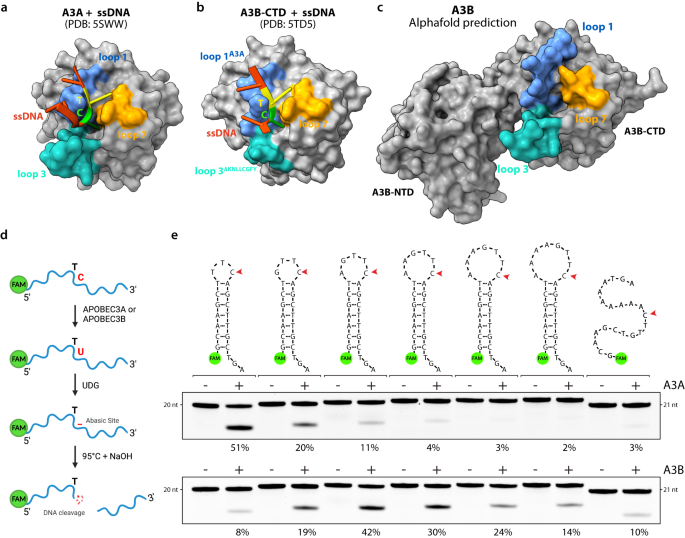2024-03-18 カリフォルニア大学校アーバイン校(UCI)
<関連情報>
- https://news.uci.edu/2024/03/18/uc-irvine-led-research-team-discovers-role-of-key-enzymes-that-drive-cancer-mutations/
- https://www.nature.com/articles/s41467-024-45909-5
APOBEC3AとAPOBEC3Bの脱アミナーゼ活性がメソスケールDNAの特徴に影響し、腫瘍の突然変異のランドスケープが形成される Mesoscale DNA features impact APOBEC3A and APOBEC3B deaminase activity and shape tumor mutational landscapes
Ambrocio Sanchez,Pedro Ortega,Ramin Sakhtemani,Lavanya Manjunath,Sunwoo Oh,Elodie Bournique,Alexandrea Becker,Kyumin Kim,Cameron Durfee,Nuri Alpay Temiz,Xiaojiang S. Chen,Reuben S. Harris,Michael S. Lawrence & Rémi Buisson
Nature Communications Published:18 March 2024
DOI:https://doi.org/10.1038/s41467-024-45909-5

Abstract
Antiviral DNA cytosine deaminases APOBEC3A and APOBEC3B are major sources of mutations in cancer by catalyzing cytosine-to-uracil deamination. APOBEC3A preferentially targets single-stranded DNAs, with a noted affinity for DNA regions that adopt stem-loop secondary structures. However, the detailed substrate preferences of APOBEC3A and APOBEC3B have not been fully established, and the specific influence of the DNA sequence on APOBEC3A and APOBEC3B deaminase activity remains to be investigated. Here, we find that APOBEC3B also selectively targets DNA stem-loop structures, and they are distinct from those subjected to deamination by APOBEC3A. We develop Oligo-seq, an in vitro sequencing-based method to identify specific sequence contexts promoting APOBEC3A and APOBEC3B activity. Through this approach, we demonstrate that APOBEC3A and APOBEC3B deaminase activity is strongly regulated by specific sequences surrounding the targeted cytosine. Moreover, we identify the structural features of APOBEC3B and APOBEC3A responsible for their substrate preferences. Importantly, we determine that APOBEC3B-induced mutations in hairpin-forming sequences within tumor genomes differ from the DNA stem-loop sequences mutated by APOBEC3A. Together, our study provides evidence that APOBEC3A and APOBEC3B can generate distinct mutation landscapes in cancer genomes, driven by their unique substrate selectivity.


